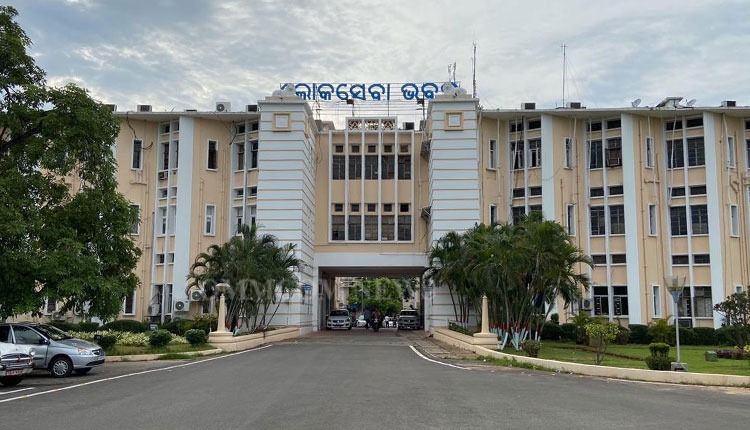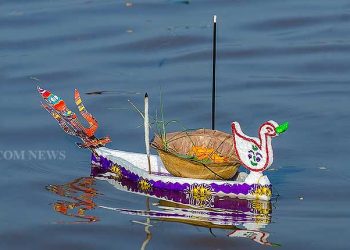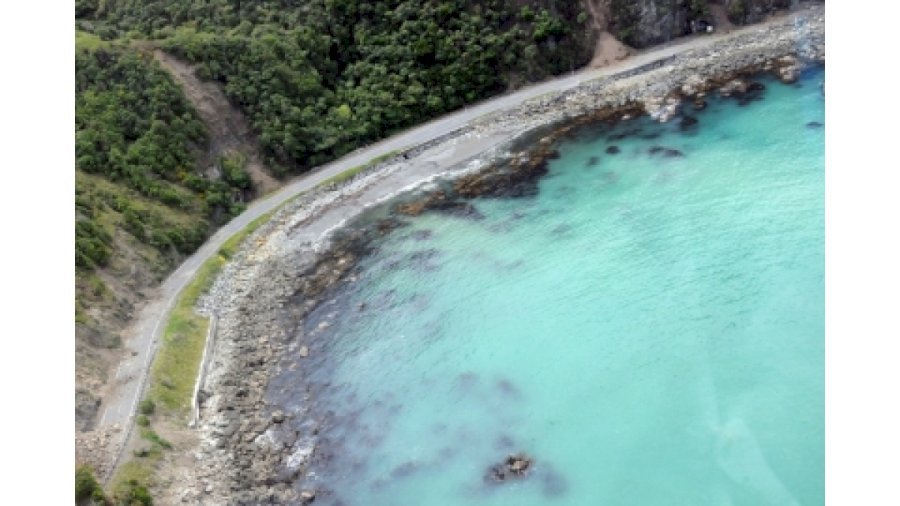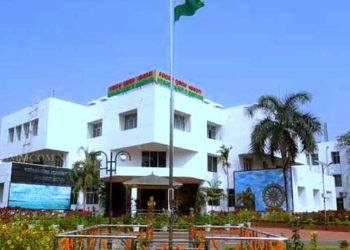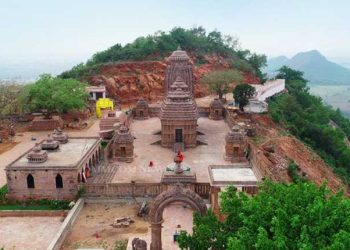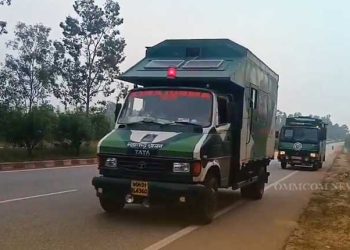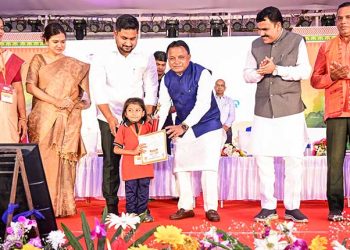Bhubaneswar: The size of the economy has expanded nearly fifteen times since the year 2000-01, reflecting impressive economic progress. There has been a significant reduction in the gap between state per capita income and national per capita income.
This was revealed during a review of the activities of the Planning & Convergence Department by Chief Minister Naveen Patnaik today.
Planning & Convergence Minister Rajendra Dholakia appraised the Chief Minister as follows during the review:
- New Odisha, Empowered Odisha
The Government of Odisha, under the able vision of the Chief Minister, is committed to bringing forth a ‘New Odisha, Empowered Odisha’aligning with the 5T framework of governance. Recognizing that different regions of Odisha have different developmental needs; the Government of Odisha has introduced region-specific developmental programmes wherein projects are being undertaken on a mission mode.
- Odisha’s Thriving Momentum
The State’s economy has been growing at an accelerated pace, outpacing the national economy. The size of the economy has expanded nearly fifteen times since the year 2000-01, reflecting impressive economic progress. There has been a significant reduction in the gap between state per capita income and national per capita income.
- Addressing Regional Disparities
3.1: Budget for Western Odisha enhanced significantly through WODC
To address the concerns of Western Odisha specifically, the annual budget of Western Odisha Development Council (WODC) has been enhanced over the years from Rs. 100 crores in FY 2008-09 to Rs. 200 crores in FY 2021-22 and now to Rs 325 crores in FY 2023-24. WODC funds are used for the creation of essential community infrastructure related to different sectors: Ecotourism, auditoriums, and handloom malls, to name a few. As many as 1600 community centres-cum-Kalyan Mandap are being created through WODC under ‘Mukyamantri Sabhaghar’.
3.2: Accelerating Economic Growth in the erstwhile undivided KBK (Kalahandi, Koraput &Balangir) Region
3.2. a: Under the Biju KBK Plan, since 2007-08, an amount of Rs 120.00 crores is being allotted annually to the plan. A total amount of Rs 1940.00 crore has been allocated till FY 2022-23 to the eight KBK districts resulting in improvement in infrastructure.
3.2.b: To bridge the demand for critical and emerging infrastructure needs, the ‘Infrastructure Development Fund Scheme for KBK districts’ has been introduced with an outlay of Rs.130 crores per annum from 2017-18. Since inception till FY 2022-23, Rs 639.06 crore has been allotted to different departments for different infrastructural works.
3.3: Expediting development in Kandhamal & Gajapati Districts
Under the Biju Kandhamal ‘O’ Gajapati Yojana, an amount of Rs 400 crore has been allocated till FY 2022-23 for the growth of the two districts.
3.4: Ushering in development in ‘Swabhiman Anchala’
In the year 2018, Chief Minister inaugurated the Gurupriya Setu, connecting the long-isolated ‘Swabhiman Anchala’, consisting of 151 cut-off villages in 9 Gram Panchayats of Chitrakonda Block in Malkangiri District, to the mainland. Under the SETU (Socio-economic Upliftment and Transformation) scheme, a total outlay of Rs 230.28 crore till FY 2022-23, has been made. Projects to enhance livelihoods like procurement and release of 5 crore fingerlings in Balimela reservoir, cultivation of turmeric and subsequent marketing, initiating integrated farming as well as projects related to road connectivity, lift irrigation, and electrification continue to be undertaken to bring the region at par with the rest of the State.
- Developing Mining affected areas of the State
For bringing in sustained social and infrastructural development of mineral-rich regions, the DMF (District Mineral Fund) and OMBADC (Odisha Mineral Bearing Areas Development Corporation) funds have been used in crucial sectors, benefitting the persons in areas affected by mining-related operations. As of FY 2022-23, Rs.12792 crores have been utilised from DMF for activities like Drinking Water Supply, Health care, Education, Livelihood opportunities, Physical Infrastructure, Irrigation etc for the welfare and benefit of the mining-affected people and areas.
The DMF fund has been pivotal in supplementing the State’s efforts in the construction of notable infrastructure namely the 500 bedded Medical College and Hospital in Keonjhar, providing artificial limbs (Prosthesis and Orthosis) and setting up Advance Rehabilitation Centre (ARC) in Angul, Sukinda Mega Lift irrigation project in Jajpur to name a few.
- Leaving No One Behind
As the Government continues its march towards an empowered Odisha, it is committed to leaving no one behind. The efforts of the districts towards the same continue to be validated through their bagging multiple awards nationally through the Aspirational Districts Programme (ADP). To provide them with dedicated handholding support, the State is bringing in strategic initiatives through the Aspirational Blocks Programme (ABP).
5.1: Aspirational Districts
With an objective of expediting the transformation of ‘Behind-the-curve’ districts, 10 Districts of Odisha were selected as Aspirational Districts. Over the years, through the convergence of government programmes and schemes, these 10 districts have now grown on various economic developmental parameters. Cumulatively, all the Aspirational Districts of the State have won award money totalling Rs 104 crores, which in turn has been used by the districts in funding initiatives across sectors like health, education and livelihood.
- Essential Community Projects of Local Importance
Filling the gaps in community infrastructure, the ‘Mukhyamantri Swatantra Sahayata’scheme has been pivotal in setting up critical amenities for education such as e-libraries, IT Labs, science labs, and smart classrooms; to enhance tourist footfall by revamping existing places of worship like Biraja temple in Jajpur, Tara Tarini temple in Ganjam etc. The allocation under the same continues to increase over the years.
- Whole of Society, Whole of Government
The Sustainable Development Goals (SDGs) adopted by the United Nations in 2015 serve as a ‘shared blueprint’ towards achieving a better and sustainable world. Committed to achieving the SDGs, the Odisha SDG Indicator Framework (OSIF 2.0) was launched by Hon’ble Chief Minister as a step towards all the Departments of the Government converging their efforts to achieve the Goals. The Government has been publishing the SDG Budget, which reflects the alignment of the budget items to relevant SDGs. Further, the Department had set up SDG Kiosks in Sisir Saras Mela, organized by ORMAS, PR&DW Department as well as in Adivasi Mela, organized by ST & SC Development Department to disseminate knowledge on SDGs to the general public.
- Data for Transformation
At the quantifiable core of measuring progress lies data. To enhance the State’s ability in using data to make targeted interventions, the Government of Odisha is partnering with World Bank in strengthening its Statistical System. Under the ‘State Capability and Resilient Growth Policy Programme (Programme for Results)’, the World Bank has committed an amount of almost 30 million US Dollars to support the State in enhancing its data quality.
In addition, to ensure holistic and equitable development across the State, a dynamic dashboard is under development wherein all the 314 Blocks of the State would be monitored on a real-time basis across critical sectors like Education, Health & Nutrition, and Livelihood among others.



